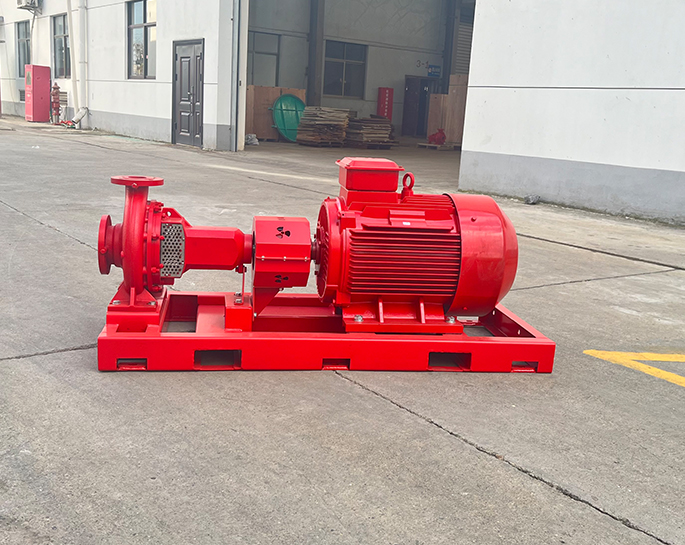What advancements are being made in pump efficiency and energy conservation in firefighting applications?
Feb 22, 2024
Share:
Advancements in pump efficiency and energy conservation in firefighting applications are crucial for improving firefighting capabilities while reducing operational costs and environmental impact. Here are some key advancements in this field:
1. **Variable Speed Drives (VSD)**: VSD technology allows firefighting pumps to operate at variable speeds based on demand, rather than running constantly at full capacity. By adjusting the pump speed to match the required flow rate, VSDs can significantly reduce energy consumption and wear on the pump system.
2. **High-Efficiency Pump Designs**: Manufacturers are developing pumps with improved hydraulic efficiency to minimize energy losses during operation. These designs optimize fluid flow paths, reduce frictional losses, and enhance impeller performance to achieve higher overall pump efficiency.
3. **Smart Pump Control Systems**: Smart pump control systems utilize sensors and algorithms to continuously monitor firefighting conditions and adjust pump operation accordingly. By optimizing pump settings in real-time, these systems maximize efficiency while maintaining effective firefighting performance.
4. **Energy Recovery Systems**: Energy recovery systems capture and reuse energy that would otherwise be wasted during firefighting operations. For example, hydraulic energy from water flow can be converted into electricity or used to power auxiliary equipment, reducing the overall energy demand of the firefighting system.
5. **Hybrid Power Systems**: Hybrid power systems combine multiple energy sources, such as diesel engines, electric motors, and battery storage, to provide flexible and efficient power for firefighting pumps. These systems can automatically switch between power sources based on availability and demand, optimizing energy usage in different operating conditions.
6. **Advanced Materials and Manufacturing Techniques**: Innovations in materials science and manufacturing techniques enable the production of lighter and more durable pump components. Lightweight materials reduce energy requirements for pump operation, while improved durability extends the lifespan of the pump system, reducing maintenance and replacement costs.
7. **Data Analytics and Predictive Maintenance**: Data analytics tools can analyze pump performance data in real-time to identify inefficiencies and predict potential equipment failures. By proactively addressing maintenance issues, firefighting agencies can minimize downtime, optimize pump performance, and reduce energy waste.
8. **Training and Education**: Firefighters are increasingly being trained in energy-efficient firefighting practices, such as proper pump operation techniques and the importance of energy conservation measures. By promoting awareness and understanding of energy efficiency principles, firefighting organizations can empower personnel to make informed decisions that optimize energy usage during firefighting operations.
These advancements demonstrate a commitment to improving pump efficiency and energy conservation in firefighting applications, ultimately enhancing the effectiveness and sustainability of firefighting efforts.

1. **Variable Speed Drives (VSD)**: VSD technology allows firefighting pumps to operate at variable speeds based on demand, rather than running constantly at full capacity. By adjusting the pump speed to match the required flow rate, VSDs can significantly reduce energy consumption and wear on the pump system.
2. **High-Efficiency Pump Designs**: Manufacturers are developing pumps with improved hydraulic efficiency to minimize energy losses during operation. These designs optimize fluid flow paths, reduce frictional losses, and enhance impeller performance to achieve higher overall pump efficiency.
3. **Smart Pump Control Systems**: Smart pump control systems utilize sensors and algorithms to continuously monitor firefighting conditions and adjust pump operation accordingly. By optimizing pump settings in real-time, these systems maximize efficiency while maintaining effective firefighting performance.
4. **Energy Recovery Systems**: Energy recovery systems capture and reuse energy that would otherwise be wasted during firefighting operations. For example, hydraulic energy from water flow can be converted into electricity or used to power auxiliary equipment, reducing the overall energy demand of the firefighting system.
5. **Hybrid Power Systems**: Hybrid power systems combine multiple energy sources, such as diesel engines, electric motors, and battery storage, to provide flexible and efficient power for firefighting pumps. These systems can automatically switch between power sources based on availability and demand, optimizing energy usage in different operating conditions.
6. **Advanced Materials and Manufacturing Techniques**: Innovations in materials science and manufacturing techniques enable the production of lighter and more durable pump components. Lightweight materials reduce energy requirements for pump operation, while improved durability extends the lifespan of the pump system, reducing maintenance and replacement costs.
7. **Data Analytics and Predictive Maintenance**: Data analytics tools can analyze pump performance data in real-time to identify inefficiencies and predict potential equipment failures. By proactively addressing maintenance issues, firefighting agencies can minimize downtime, optimize pump performance, and reduce energy waste.
8. **Training and Education**: Firefighters are increasingly being trained in energy-efficient firefighting practices, such as proper pump operation techniques and the importance of energy conservation measures. By promoting awareness and understanding of energy efficiency principles, firefighting organizations can empower personnel to make informed decisions that optimize energy usage during firefighting operations.
These advancements demonstrate a commitment to improving pump efficiency and energy conservation in firefighting applications, ultimately enhancing the effectiveness and sustainability of firefighting efforts.







